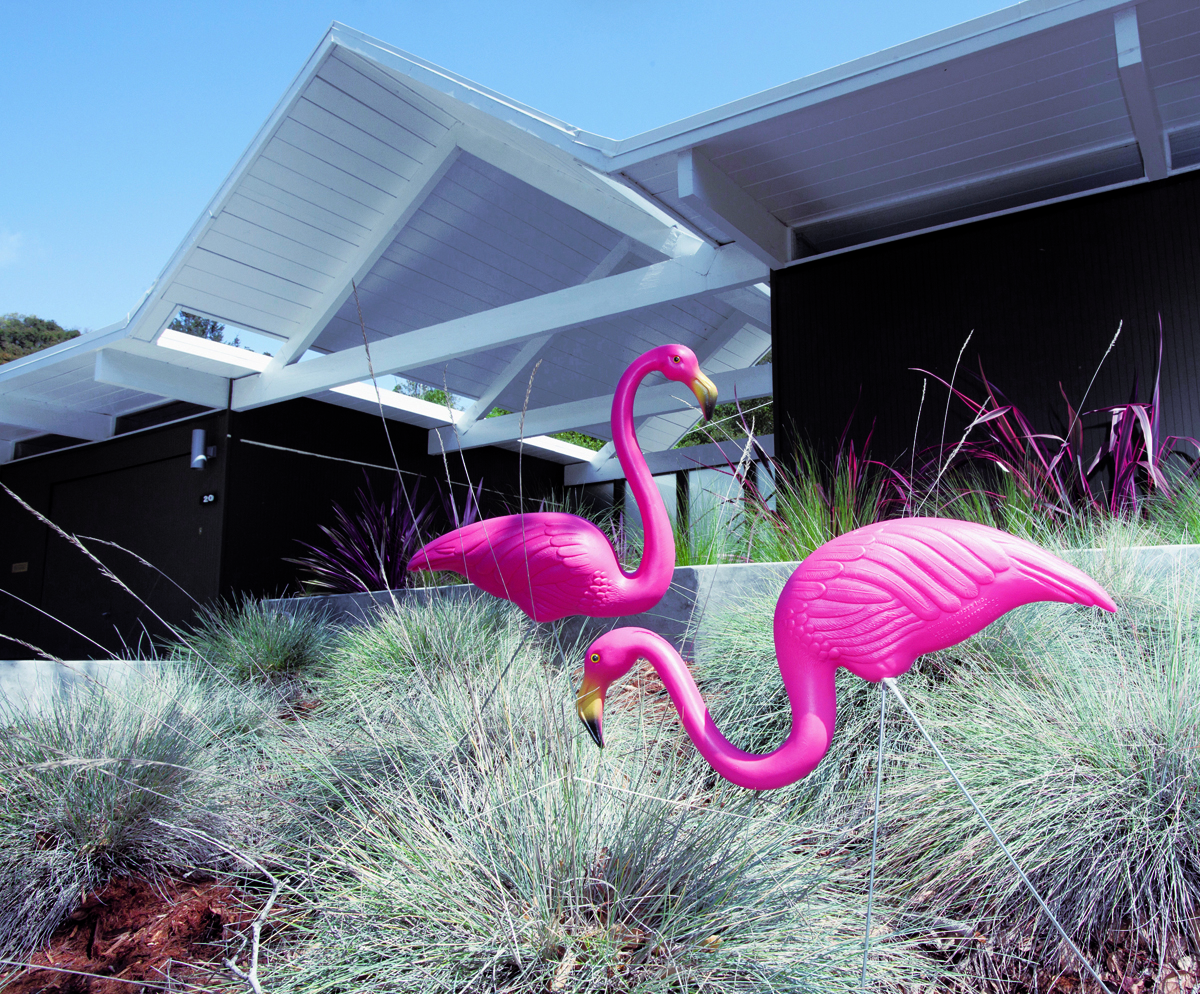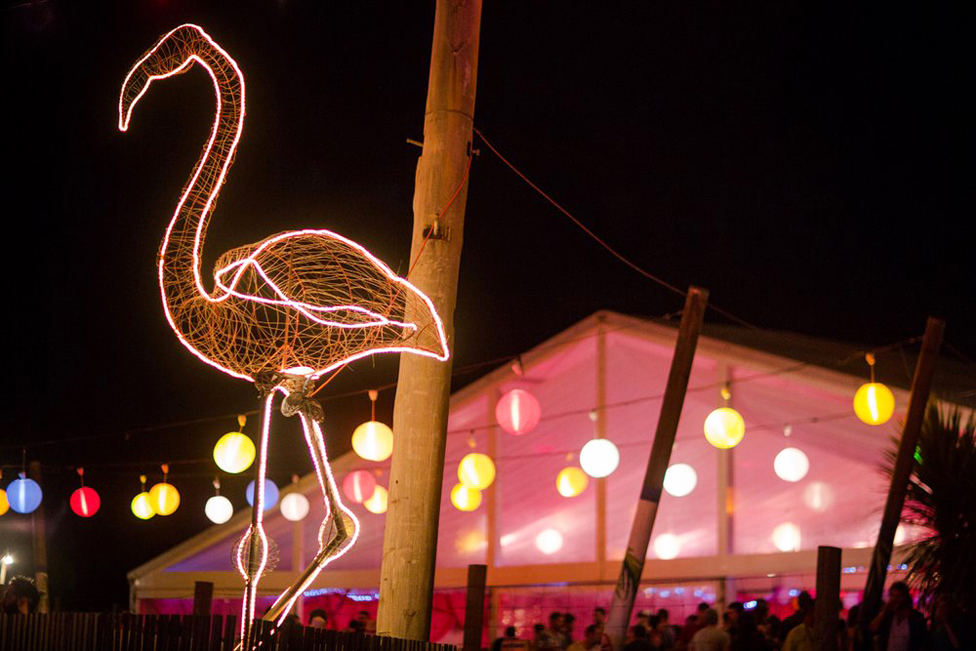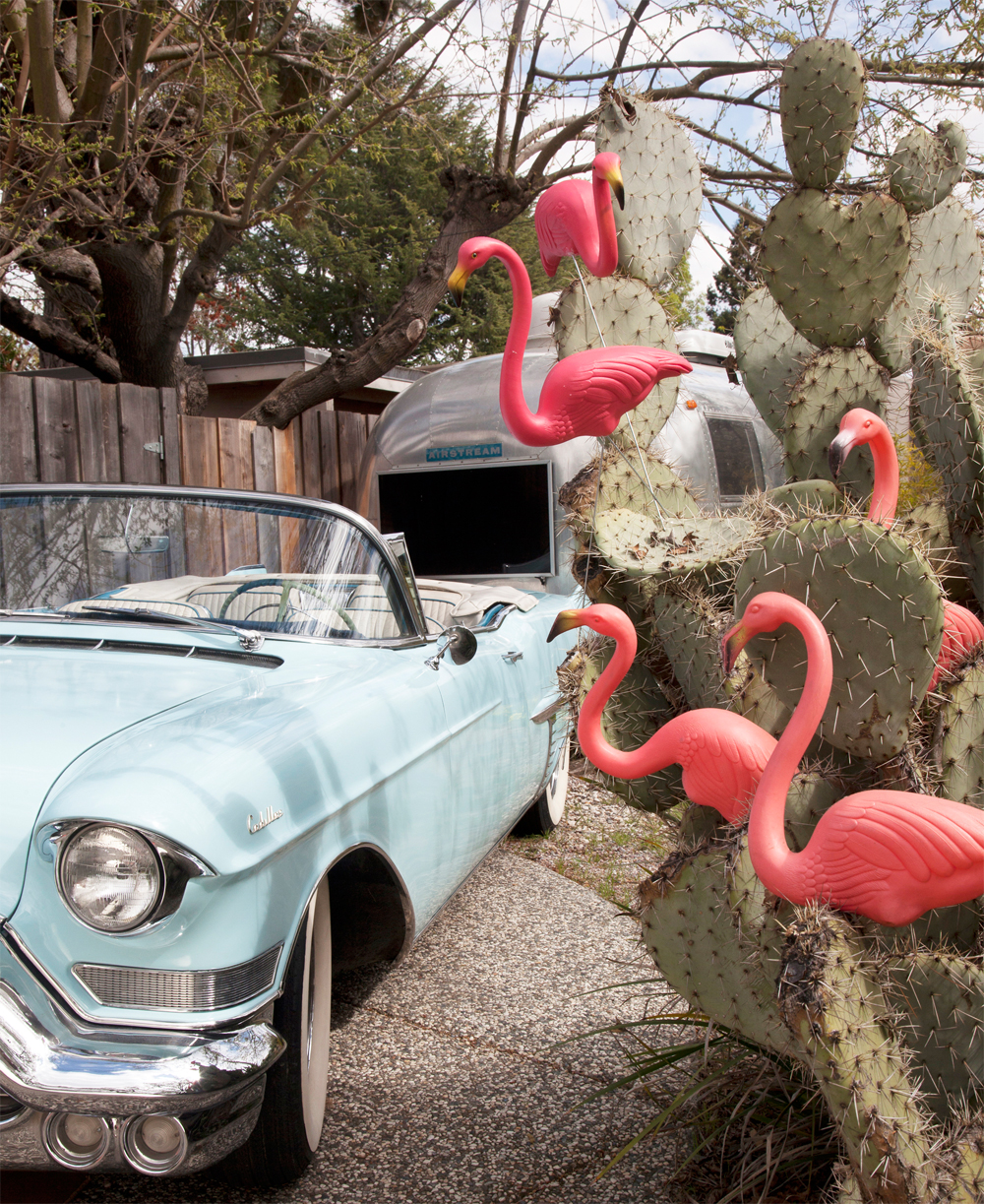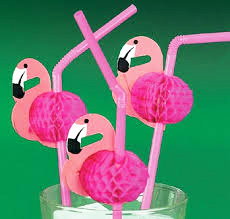Put Your Garden in the Pink - Page 2
 |
|
|
 |
|
|
 |
|
|
 |
|
|
Being in the opening credits of the 'Miami Vice' television show of the 1980s didn't hurt either.
To many modernists today who appreciate kitsch, they are still an ornament, whimsical yet peaceful.
"To me, they're an important part of my garden," says Eichler Network publisher Marty Arbunich of his San Francisco home. For one thing, he points out, "They're a completely different color down there—I mean, pink versus the green [plants]. I love the contrast I, love their look—and they put a smile on my face whenever I pass by."
In the 1990s, however, these peaceful plastic props molted into a national joke. This was at least partly due to offbeat director John Waters' classic ode to vulgarity and bad taste, 'Pink Flamingos' (1992).
Among the dissenting voices were the appreciative folks at the Annals of Improbable Research, an organization devoted to "honor achievements that first make people laugh, and then make them think." The AIR gave Featherstone its ignoble but prized Ig Nobel Prize in 1996.
Five years later, AIR joined forces with the Massachusetts-based Museum of Bad Art in calling for a boycott of flamingo knock-offs, the molds for which had been purchased from Union Products by another company. Unlike those hatched by Union, these birds do not bear the molded signature of Don Featherstone.
"The public was never warned," intoned AIR editor Marc Abrahams. "The manufacturer released these altered flamingos into the wild without doing any environmental testing. A plastic pink flamingo with its Featherstone removed is a pitiful thing, probably unable to survive in nature."
Indeed, and why would the noble flamingo be any more subject to such indignity than its silly, garden-dwelling cousin, the gnome? Arbunich certainly disagrees with flamingo abuse, terming it "unfair" and commenting, "I think they look great, especially in pairs."
"What started out as a fun fad turned into the ultimate in tacky, and evolved into kitsch art on your front lawn," Marjorie Weiner, outreach coordinator for the National Plastics Center museum, told the Associated Press. "You really can't help but smile when you look at them, and giggle, because they're funny."
And practically a member of the family for folks like Arbunich, who admits, "When guests are leaving my home and walking down the stairs to my garden, I often blurt out in a playful way, 'Say hello to my cute little redheads down there, will ya?'"




